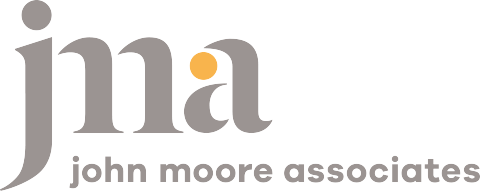Understanding Employee Benefits
Share This Insight
Starting your first “real” job comes with a lot of firsts: your first steady paycheck, your first professional responsibilities, and your first experience navigating employee benefits. You’ve probably heard terms like 401(k), health insurance, and disability coverage, but they may not have felt relevant—until now.
It’s easy to put benefits on the back burner when you're overwhelmed by options. But they’re more than just boxes to check. They’re powerful tools that help protect your finances and build a more stable, secure, and generous life. The sooner you start paying attention, the better off your future self will be.
Here are a few tips for navigating your employee benefits.
Retirement Starts Earlier Than You Think
Saving even a little early in your career gives your money more time to grow through compound interest, which is why it’s so important to save for retirement as early as possible.
If your employer offers a 401(k), 403(b), or IRA, highly consider enrolling, especially if there is a company match. You may be able to choose between:
- Traditional IRA/401(k): Pre-tax contributions now, taxed when you withdraw in retirement. Good if you expect a lower tax bracket later.
- Roth IRA/401(k): Contributions are taxed now, but withdrawals are tax-free. Ideal if you expect to earn more down the line.
Not sure which to choose? A financial advisor can help you weigh your options.
You may have the option to choose your own investments or, for a more hands-free option, select a target-date fund based on the year you expect to retire (typically around age 70). These funds automatically shift from growth-focused to conservative as you age so that your portfolio stays balanced with less effort.
Don’t Leave Free Money on the Table
Most employers will match a percentage of your retirement contributions. For example, a match might look like “100% of the first 3%, 50% of the next 2%,” meaning you’d need to contribute 5% to get the full match.
That’s free money going into your retirement. Be sure to contribute enough to take full advantage.
Health Insurance: Planning for the Unexpected
If you’re under 26, you might still be on a parent’s plan. But when it’s time to choose your own, you’ll likely pick between a low-deductible plan (higher premiums, lower out-of-pocket costs) and a high-deductible plan (lower premiums, but you pay more up front).
High-deductible plans often come with access to a Health Savings Account (HSA). This is a powerful tool for both healthcare and long-term savings:
- Contributions go in pre-tax
- The account grows tax-free
- Withdrawals for qualified medical expenses are tax-free
- After age 65, any withdrawals for any reason are tax-free
If you can, contribute at least enough to cover your deductible. If you don’t use the funds, they can roll over and even be invested for future use.
Life, Disability, and the Stuff You Don’t Want to Think About
No one likes to imagine getting seriously sick or injured—but protecting against those possibilities is a key part of financial responsibility.
- Life insurance helps protect your loved ones and cover final expenses. Many employers offer basic coverage (around $50,000–$100,000), but it may not be enough. You can often supplement with an affordable term policy.
- Disability insurance replaces a portion of your income if you can’t work due to illness or injury. Policies vary—some cover only total disability, others protect your specific occupation. Be sure to understand what your plan includes.
According to the Social Security Administration, “Just under one in four of today’s 20-year-olds can expect to be out of work for at least a year because of a disability condition before they reach the normal retirement age.” Employers often offer a base plan with the option of increasing coverage at an additional cost. It is usually beneficial to opt in to that extra coverage as a safety net against that kind of life-changing event.
Don’t Let Taxes Catch You Off Guard
Make sure your tax withholdings are accurate. Over-withholding leads to smaller paychecks all year. When you get a tax refund, it’s because you’ve loaned money interest-free to the government all year. You’re often better off paying only what you owe and putting the extra to use such as paying off a debt, working toward a goal, boosting savings, or other long-term planning. But be sure you’re having enough taxes taken out, too. Under-withholding can leave you with an unexpected tax bill.
Use tools like the SmartAsset Tax Calculator to estimate your tax bracket and adjust accordingly.
And if you freelance or have side income, plan ahead. If you expect to owe $1,000 or more at tax time, you may need to make quarterly estimated payments.
Start Now, Thank Yourself Later
We know. It’s a lot. But understanding your benefits will help you be more confident and prepared as you enter the workforce. And trust us, your future self will be grateful you didn’t wait.
This material is for informational purposes only and does not constitute financial, legal, or tax advice. Investment decisions should be made based on your individual goals and circumstances. Please consult with a qualified professional before taking action.
Subscribe for More Financial Insights
Never miss a post. Receive notifications by email whenever we post a new JMA Insight.
